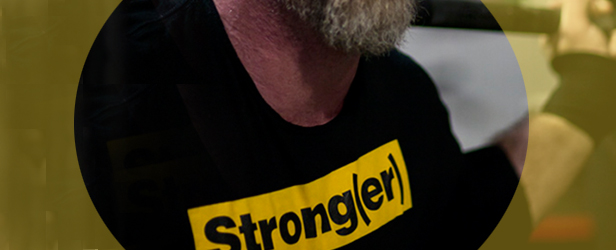
When I tore the pulley weight out of the wall, they told me my arm would be all right. I had been doing rehab for many months in the polio ward of a local hospital. A blow to the neck in football practice had paralyzed my right arm. Pulley weights, electroshock therapy, and lifting a pillowcase filled with numerous cans of tuna fish was my rehabilitation every day. Such was the state of the art in 1957.
Thus began my love affair with weight training, and it's been going on ever since. Not only did we not lift weights in high school—it was forbidden, but in order to lift, you also had to find a place. My place was the local YMCA. The weight room was in the basement and leaky pipes often dripped water on us. We had a nail on which to hang our clothes, and the shower had suck weak pressure. It was hard just to get wet. There were some bodybuilders, Olympic lifters, and professional wrestlers that lifted there. However, I didn't know anything about anything.
At first, I just watched. Gradually, though, I began to copy what I saw and discovered that I was kind of strong. I tried stuff I saw the bodybuilders do and stuff I saw the Olympic lifters do, and my routine soon became a hodge-podge of both. There was no sport of powerlifting at that time, and there was no one to help.
On one occasion, I decided to bench press alone...big mistake. I tried a weight that I had not tried previously and missed it. As I lay there with my chest being crushed, I wondered what the hell to do. Suddenly, the lights seemed to go dim. For a second I thought there might be an eclipse, that is until the largest man I had ever seen appeared above me and said, "Need any help son?"
I was barely able to reply, "Please," as he lifted the weight from my chest and put it in the rack.
"Ask someone for help before you do that," he told me.
And that is how I met "Gorgeous George," one of the most famous professional wrestlers at that time. I watched those guys work out and was quite impressed.
University of North Carolina at Chapel Hill was too big in 1959. For quite some time, I wandered around locating my classes and the routes from my dorm to places to eat. However, one day—after I finally got acclimated to college life and my particular schedule, I wandered into the Tin Can. The Tin Can was a huge metal WWII structure that housed Carolina's indoor athletics. There was a wooden track and an area for weights, fencing, and other indoor sports. I guess there were also some locker rooms because basketball games were played there. (This was long before Carmichael Auditorium was built and before the Dean Dome was even a concept.) I wandered around and found some very large young men lifting weights. I asked if I could join them and a few days later I did. I lifted with the shot-putters from the track team the rest of the semester. In the spring, some of the football players joined in. Within a reasonable time, I was lifting the weights that they were, and I was quite proud of myself.
That building became my stomping grounds for the next four years. I met a lot of interesting, strong people and made some good friends. From time to time, we attended contests at various YMCAs. There were bench press contests and standing press competitions, and we did quite well.
However, grunting and grooming and sweating profusely took a back seat for a while as I attended law school. Three years of work, study, and more work and study became my entire life.
Then, after law school, I acquired a set of York Olympic plates and a bar, which I still have and use from time to time. I trained at the Y, at home, and joined the Nautilus craze for the few years that it was popular. My weight training was in squats, so I participated in rugby, tennis, and racquetball. The stops and starts of 30 years of racquetball resulted in the necessity of a hip replacement that brought competitive racquetball to a halt.
Consequently, I returned to my first mistress: weight training. And she was still there waiting for me. To help facilitate a large weight loss and to help rehab the hip, I started doing powerlifting's compound movements. The more I read on such sites as elitefts.com, the more I thought about competing. With the encouragement of Donnie Thompson, together with his training, I got serious. I have been very fortunate to remain relatively healthy, to have a great teacher, to have won some competitions, and to have set some records and fill a void where no records existed. And I plan to keep on for as long as I can.
So, what should one do at my age? Well, while weight training was fun 50 years ago, now it's essential. For too many of us, if we fall down we're not strong enough to get up. While competitive powerlifting may not be for us, the principles of powerlifting ARE. What specifically should we do? Let's talk about that next time....









